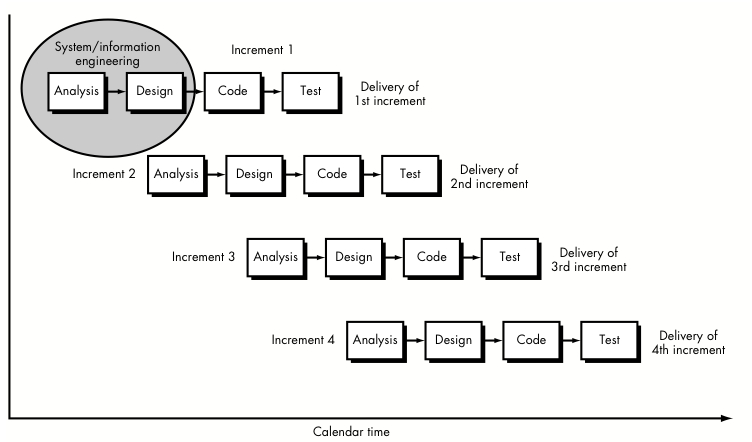CSC/ECE 517 Fall 2009/wiki3 15 assertions
Programming with assertions
Assertions are predicates or statements with expressions which the programmer thinks should be true at the time of execution. Assertions are a powerful way of detecting bugs in programs.
Overview
Every software product goes though a Software Process or more commonly known as Software Development Cycle. The various stages in the cycle are:

- Planning
- Design
- Development
- Testing
- Release and Maintenance
It is impossible for a programmer to make any program a hundred percent bug free. Even worse, there maybe subtle things which the programmer assumes are always true but may not be so in many corner cases. Debugging is an integral part of the Software Process. Bugs can crop up anytime due to various test cases formulated all through these aforementioned stages. To be sure that whatever the programmer assumes is true, assertions can be set up in the program. If ever, the condition evaluates to be false, the program terminates with an assertion. Another way to put it is that assertions are a way to show the programmer that things cannot be taken for granted by the latter. Assertions can be thought of as medium of validating the correctness of modules.
Purpose
The various uses of assertions are:
- Validates correctness of (sub)program
- Supports programming by contract (documentation)
- Helps in debugging
- Exception handling by integrating assertion failures to be detected dynamically
Assertions can be used by the programmer to make sure that wrong runtime assumptions (by the programmer) can be caught.
Types of assertions
Assertions can be categorized primarily as follows:
- Pre-conditions
- Post-conditions
- Class invariants
- Invariants (Control-flow, Loop etc.)
- Loop variants
As Dr.Gehringer mentions, the first three classes are discussed in class and will not be a focus of this wiki. Instead, this will concentrate on the other types of assertions, viz., Control flow, Loop invariants and Loop variants. Invariants are those conditions with a precondition as well as post condition. A loop invariant is an expression for a variable which remains constant through-out the loop. On the other hand, control-flow invariants are those cases which specify that the control should never reach to that part of code. Consider the following code:
for (....) {
if (...)
return x;
else if (...)
return y;
/* Control should never reach here */
}
Now observe how control-flow invariance can be validated by assertions:
for (....) {
if (...)
return x;
else if (...)
return y;
assert false
}
They are also a very useful tool to detect logical errors. For e.g consider the following code:
switch(scase) {
case 1: ....
case 2: ....
default: assert false;
}
This code fragment clearly says that the programmer assumes that the variable scase will take either of the listed values. If the variables reaches the default segment, then there is a logical error in the program.
Numerous other run-time checks can be made. The following example illustrates that:
if (threads % 4 == 0) {....}
else if (threads % 4 == 1) {....}
else if (threads % 4 == 2) {....}
else {
// we know that it has to be 3
assert(threads % 4 == 3);
....
}
This method is called as asserting an Internal invariant. The latter means that even though its obvious that the result would be 3, we eliminate any logical errors by asserting that.
Programming languages supporting native assertions
The following programming languages support assertions natively:
- Cobra
- D
- Eiffel
- Fortress
- Lisaac
- Nice
- Oxygene (formerly Chrome)
- Sather
- SPARK, via static analysis of Ada programs
- Spec#
Advantages and disadvantages of assertions
References
- R. S. Pressman. Software Engineering "A Practitioner Approach" New York McGraw-Hill, 2001, p386-p429.
- http://en.wikipedia.org/wiki/Waterfall_model
- http://en.wikipedia.org/wiki/Spiral_model
- http://www.testinggeek.com/index.php/testing-types/life-cycle/55-bigbang-integration-testing
- http://www.cs.umd.edu/~aporter/html/currTesting.html
- https://wiki.cac.washington.edu/display/SWTest/Functional+Testing
- http://www.devbistro.com/articles/Testing/Requirements-Based-Functional-Testing
- http://www.bugzilla.org/
- https://launchpad.net/
- http://docs.joomla.org/Functional_Testing
- http://www.opensourcetesting.org/